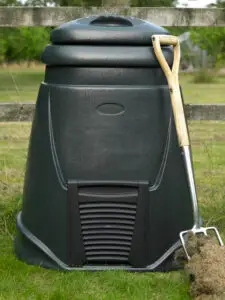A Complete Guide to Composting: Turning Food Scraps into Garden Gold
A Guide to Composting

Composting is one of the simplest and most powerful ways to reduce waste and give back to the earth. Every peel, coffee ground, and wilted lettuce leaf that would otherwise end up in landfill has the potential to be transformed into nutrient-rich compost—what gardeners often call “black gold.” Whether you’re new to composting or want to refine your process, this guide will walk you through everything you need to know: from the basics of how composting works, to setting up your own system, troubleshooting common issues, and using finished compost in your garden.
Why Compost?
Before diving into the “how,” it helps to understand the “why.” Composting is more than a garden activity—it’s an environmental act, a sustainability practice, and a money-saver all in one.
Reduce landfill waste: Around half of the average household bin is made up of organic matter. When dumped in landfill, this waste decomposes without oxygen, producing methane, a potent greenhouse gas. Composting at home keeps food scraps out of landfill.
Save money on fertiliser: Compost provides a slow-release source of nutrients for plants, reducing the need for chemical fertilisers.
Improve soil health: Compost improves soil structure, increases water retention, and feeds the soil microbiome that supports plant growth.
Close the loop: Composting is nature’s recycling system—it turns what looks like “waste” into a valuable resource.
How Composting Works
At its core, composting is a natural process of decomposition. Microorganisms (bacteria, fungi, and other decomposers) break down organic matter into humus, a dark, crumbly, earthy-smelling material. To keep these organisms happy and active, composting relies on four key ingredients:
Carbon (Browns): Dry leaves, straw, cardboard, and shredded paper. These provide energy for microbes.
Nitrogen (Greens): Fruit and veggie scraps, coffee grounds, fresh grass clippings. These provide protein for microbes.
Water: Compost should be as damp as a wrung-out sponge. Too dry and decomposition slows down; too wet and it turns smelly.
Air: Decomposers need oxygen. Turning or aerating your pile keeps it healthy.
The ideal balance is roughly 2–3 parts browns to 1 part greens.
Types of Composting Systems
Not every composting method suits every home or lifestyle. Here are some of the most popular options:
1. Compost Bin or Heap
Best for: Backyards with space.
How it works: You create a pile or use a bin where organic matter breaks down over weeks to months.
Pros: Can handle large volumes, simple and affordable.
Cons: Needs regular turning, slower in cold climates.
2. Tumbler Bin
Best for: Small to medium gardens.
How it works: A sealed drum that you spin to mix and aerate the compost.
Pros: Faster decomposition, rodent-proof.
Cons: Limited capacity, can be heavy to turn when full.
3. Worm Farm (Vermicomposting)
Best for: Small spaces, courtyards, balconies.
How it works: Special worms (usually Eisenia fetida, or red wigglers) eat food scraps and produce worm castings (a nutrient-rich fertiliser).
Pros: Great for food scraps, compact, produces “worm tea.”
Cons: Worms need care, can’t process large volumes or citrus/onion in big amounts.
4. Bokashi Bin
Best for: Apartments or households with limited outdoor space.
How it works: Food scraps are fermented in an airtight bin using a special bran inoculated with microbes. The pre-compost can then be buried or added to a compost heap.
Pros: Can handle meat, dairy, and cooked food.
Cons: Requires ongoing purchase of Bokashi bran, needs final burial or composting step.
What You Can and Can’t Compost
A successful compost pile depends on choosing the right materials.
Compostable Items (Yes!)
Fruit and veggie scraps
Coffee grounds and tea leaves
Eggshells (crushed)
Garden clippings and dry leaves
Shredded cardboard and paper (uncoated)
Hair, pet fur, vacuum dust (natural fibres)
Avoid or Limit (No!)
Meat, fish, and dairy (unless using Bokashi)
Oily or greasy foods
Pet waste (can carry pathogens)
Glossy paper or plastics
Large woody branches (unless shredded)
Step-by-Step: Starting Your Compost
Choose your system: Bin, heap, tumbler, worm farm, or Bokashi.
Pick a location: Shady, well-drained, and accessible.
Start with a base layer: Browns such as twigs or shredded cardboard.
Add greens: Kitchen scraps or fresh clippings.
Cover with browns: Always top greens with browns to prevent odours and pests.
Maintain moisture: Keep it damp but not soggy.
Turn regularly: Every 1–2 weeks if using a heap or bin.
Wait and monitor: Compost is ready when it’s dark, crumbly, and smells earthy.
Common Compost Problems and Fixes
Smelly pile? Too many greens. Add more browns and turn the pile.
Dry and inactive? Add water and more greens.
Pests or rodents? Avoid meat/dairy, always cover food scraps, and use a closed bin.
Too slow? Chop materials smaller, balance greens and browns, and turn more often.
Using Your Finished Compost
Once ready, compost can be used in many ways:
Soil conditioner: Mix into garden beds to improve soil structure.
Mulch: Spread around plants to retain moisture and suppress weeds.
Potting mix booster: Blend with soil or store-bought mix.
Lawn top-dressing: Sprinkle thinly over grass for a nutrient boost.
Composting in Small Spaces
Even if you live in an apartment, composting is possible. Worm farms and Bokashi bins are compact, odour-free options. Some councils also offer community composting hubs where you can drop off scraps. A small kitchen caddy lined with newspaper is all you need to collect food scraps daily.
Composting Tips for Success
Chop scraps into smaller pieces for faster breakdown.
Layer greens and browns like lasagne.
Keep a container of shredded cardboard or leaves nearby for easy browns.
If using a worm farm, feed little and often, and avoid overloading.
Think of composting as a cycle: what comes from the earth should return to it.
Final Thoughts
Composting is one of those practices where small actions add up to big results. A banana peel may not seem like much, but when multiplied across households and communities, composting significantly reduces waste, cuts emissions, and nourishes gardens. It’s simple, rewarding, and once you get into the habit, it becomes second nature.
So why not start today? Your future garden—and the planet—will thank you.
